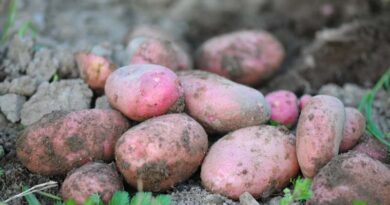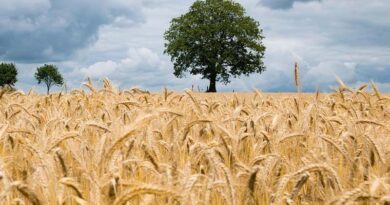
Top Pests in Soybean and Their Chemical Control: Dosages and Application Timing
13 August 2025, New Delhi: Soybean is one of the most important legume crops grown in India, contributing significantly to oilseeds and protein supply. However, its productivity is often threatened by several insect pests. To protect soybean crops and ensure optimum yields, timely pest management is crucial. The National Soybean Research Institute (NSRI) has issued comprehensive guidelines for chemical control of major soybean pests, including recommended insecticides, dosages, and application timing.
This article provides an in-depth overview of the top soybean pests, their behavior, and authoritative chemical control measures for effective pest management.
1. Tobacco Caterpillar (Spodoptera litura)
Tobacco caterpillar is a major leaf-eating pest in soybean. Caterpillars feed on the leaves, reducing photosynthesis and overall plant vigor. Early detection is critical to prevent heavy yield losses. According to NSRI, the following insecticides are recommended:
- Chlorantraniliprole 18.5% SC – 150 ml/ha
- Spinetoram 11.7% SC – 450 ml/ha
- Emamectin Benzoate 1.9% – 425 ml/ha
- Flubendiamide 20% WG – 250–300 g/ha
- Flubendiamide 39.35% SC – 150 ml/ha
- Indoxacarb 15.8% SC – 333 ml/ha
- Chlorfluazuron 5.4% EC – 500 ml/ha
- Novaluron + Indoxacarb 4.5% SC – 825–875 ml/ha
- Broflanilide 300 g/l SC – 42–62 g/ha
Application Tip: Spray the insecticides as soon as caterpillar infestation is observed to maximize effectiveness and minimize leaf damage.
2. Semilooper Caterpillar
Semilooper larvae also feed on soybean leaves, creating irregular feeding patterns that reduce the photosynthetic area. NSRI recommends early intervention with these insecticides:
- Chlorantraniliprole 18.5% SC – 150 ml/ha
- Emamectin Benzoate 1.9% – 425 ml/ha
- Broflanilide 300 g/l SC – 42–62 g/ha
- Flubendiamide 20% WG – 250–300 g/ha
- Flubendiamide 39.35% SC – 150 ml/ha
- Lambda-Cyhalothrin 4.9% CS – 300 ml/ha
- Profenophos 50% EC – 1 L/ha
- Chlorantraniliprole 9.3% + Lambda-Cyhalothrin 4.6% ZC – 200 ml/ha
Application Tip: Monitor the field closely. Apply sprays at the early larval stage for best results.
3. Bihar Hairy Caterpillar
Bihar hairy caterpillar appears in clusters and can cause severe defoliation if left unchecked. NSRI advises removing infested plants early and using chemical sprays:
- Flubendiamide 20% WG – 250–300 g/ha
- Flubendiamide 39.35% SC – 150 ml/ha
- Lambda-Cyhalothrin 4.9% CS – 300 ml/ha
- Indoxacarb 15.8% EC – 333 ml/ha
Application Tip: Early action, combined with manual removal of affected plants, can significantly reduce pest population.
4. Stem Fly
Stem fly is a sap-sucking pest that damages soybean stems, leading to yellowing, stunted growth, and reduced yield. Recommended insecticides by NSRI include:
- Thiamethoxam 12.6% + Lambda-Cyhalothrin 9.5% ZC – 125 ml/ha
- Betacyfluthrin + Imidacloprid – 350 ml/ha
- Isocycloseram 9.2% WW DC – 600 ml/ha
- Bifenthrin 32% + Chlorantraniliprole 12% WG – 250 g/ha
Application Tip: Spray as soon as initial symptoms appear, such as wilting or stem lesions.
5. Combined Control of Leaf-Eating and Sap-Sucking Pests
Often, soybean plants face simultaneous attacks from leaf-eating caterpillars (tobacco, semilooper, gram caterpillars) and sap-sucking pests (whiteflies, jassids, stem borers). For integrated control, NSRI recommends:
- Spinetoram 11.7% SC – 450 ml/ha
- Chlorantraniliprole 18.5% SC – 150 ml/ha
- Chlorantraniliprole 9.3% + Lambda-Cyhalothrin 9.5% ZC – 200 ml/ha
- Thiamethoxam 12.6% + Lambda-Cyhalothrin 9.5% ZC – 125 ml/ha
- Betacyfluthrin + Imidacloprid – 350 ml/ha
- Indoxacarb 15.8% SC – 333 ml/ha
Application Tip: Early detection and combined chemical sprays help reduce the need for repeated treatments, lowering costs and chemical load.
6. Leaf Miner and Stem Borer (Chakra Bhrung)
Stem-boring pests like Chakra Bhrung can tunnel into stems, causing plant weakening and yield loss. NSRI recommends early intervention:
- Thiacloprid 21.7% SC – 750 ml/ha
- Tetraniliprole 18.18% SC – 250–300 ml/ha
- Chlorantraniliprole 18.5% SC – 150 ml/ha
- Emamectin Benzoate – 425 ml/ha
- Profenophos 50% EC – 1 L/ha
Application Tip: Remove and destroy affected plant parts to prevent pest spread, in addition to spraying insecticides.
Effective pest management in soybean is critical for achieving high yields and ensuring crop health. The National Soybean Research Institute (NSRI) provides evidence-based recommendations for chemical control of major pests, including tobacco caterpillar, semilooper, Bihar hairy caterpillar, stem fly, and stem borers.
By following these authoritative guidelines—spraying at the correct time, using recommended doses, and combining chemical and cultural practices—farmers can protect their soybean crops, minimize losses, and achieve sustainable production.
Also Read: ICRISAT and Partners Discover New Gene for Sterility Mosaic Disease Resistance in Pigeonpea
📢 If You’re in Agriculture, Make Sure the Right People Hear Your Story.
From product launches to strategic announcements, Global Agriculture offers unmatched visibility across international agri-business markets. Connect with us at pr@global-agriculture.com to explore editorial and advertising opportunities that reach the right audience, worldwide.






